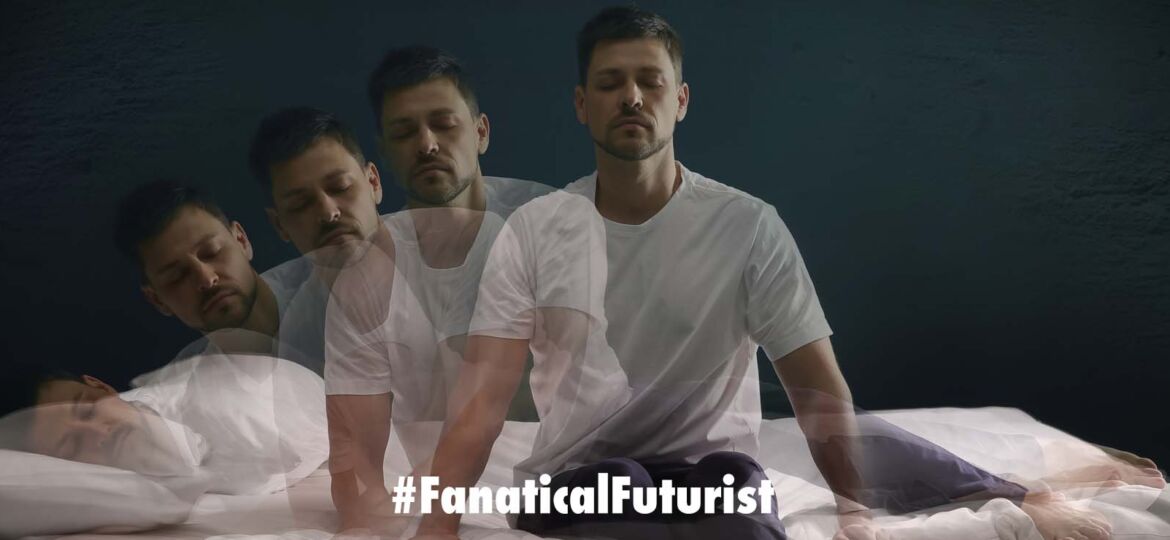
WHY THIS MATTERS IN BRIEF
If you loose the sense of touch in any part of your body, for whatever reason, it can be traumatic – but solutions are emerging.
 Love the Exponential Future? Join our XPotential Community, future proof yourself with courses from XPotential University, read about exponential tech and trends, connect, watch a keynote, or browse my blog.
Love the Exponential Future? Join our XPotential Community, future proof yourself with courses from XPotential University, read about exponential tech and trends, connect, watch a keynote, or browse my blog.
Touch is central to your ability to orient yourself in space and move skilfully and the loss of it, for example through paralysis or other neurological disorders, takes an emotional toll. This is one of the reasons why outfits like Elon Musk’s Brain Machine Interface (BMI) outfit Neuralink are focused on developing solutions that let the human brain send and receive neurological signals to other parts of the body – even when the link between the two points is broken, for example as is the case with a broken back.
Now a new complimentary study in the journal Brain Stimulation offers evidence that minimally invasive stimulation of the deep grooves (sulci) on the outer layer of the brain could be a clinically viable option to re-spark the sense of touch in millions of people worldwide with paralysis, spinal cord injury, diabetes mellitus, or neuropathic pain who have lost the ability to feel touch.
The Future of Health and Wellness by Futurist Keynote Matthew Griffin from FanaticalFuturist on Vimeo.
The study conducted by researchers at the Feinstein Institutes for Medical Research, the scientific arm of Northwell Health, is reported in the article, “Evoking highly focal percepts in the fingertips through targeted stimulation of sulcal regions of the brain for sensory restoration.”
“From buttoning our shirts to holding a loved one’s hand, our sense of touch may be taken for granted until we lose it,” said Chad Bouton, PhD, professor at the Institute of Bioelectronic Medicine at the Feinstein Institutes and co-principal investigator of the study. “These [results] show the ability to generate that sensation, even after it is lost, which may lead us to a clinical option in the future.”
“Advances in artificial intelligence, brain electrodes, and bioelectronic medicine hold significant promise for patients after spinal cord injury or stroke,” said Kevin Tracey, MD, president and CEO of the Feinstein Institutes. “This remarkable study indicates bioelectronic medicine and neurosurgery could restore functions previously lost in these conditions.”
In earlier studies BMI researchers have used intracortical and cortical surface electrical stimulation to restore sensations of touch and orientation to the hand. However, instead of stimulating the deeper more difficult-to-reach grooves or sulci on the undulating surface of the brain, earlier attempts have been restricted to stimulating the ridges, or the Gyri.
Since regions farther from the midline of the body, such as fingertips, are represented in regions of the primary somatosensory cortex that extend deep into the grooves, stimulating the ridges have not been very successful in evoking touch at the fingertips and other distal regions of the body.
To reach the deep grooves of the primary somatosensory cortex the researchers in this study used Stereoelectroencephalography (SEEG) depth electrodes. These electrodes that are used to electrically stimulate the grooves of the primary somatosensory cortex also record neural signals and can be used to investigate the brain’s response to electrical and mechanical stimulation. This process has allowed researchers to deepen the current knowledge of neural circuitry involved in processing touch-related sensations in the human brain, noted Santosh Chandrasekaran, PhD, co-lead author on the paper with colleague Stephan Bickel, MD, PhD.
Led by Ashesh Mehta, MD, neurosurgeon, associate professor in the Institute of Bioelectronic Medicine at the Feinstein Institutes, and co-principal investigator on the study, the authors stimulated the cerebral cortices of two patients with intractable epilepsy both on the ridges, via High-Density Electrocorticography (HD-ECoG) grids and in the grooves via SEEG depth electrodes to see which worked better in evoking precise sensations of touch in the hand.
Their results showed highly focused perception of touch can be evoked at the fingertips through SEEG stimulation deep in the grooves of the primary somatosensory cortex. The participants reported feelings of “tingling” or “sensation of electricity” localised to the hand and fingertips when electrically stimulated via SEEG.
Then, using neuroimaging tools designed by the Human Connectome Project, the authors showed the precise cortical subregions of the primary somatosensory cortex that evoke focused sensations of touch.
Comparing the two participants, the authors showed touch induced by SEEG electrodes was significantly more focal and localised to the fingertips more often, than by stimulation of ridges through HD-ECoG electrodes.
















